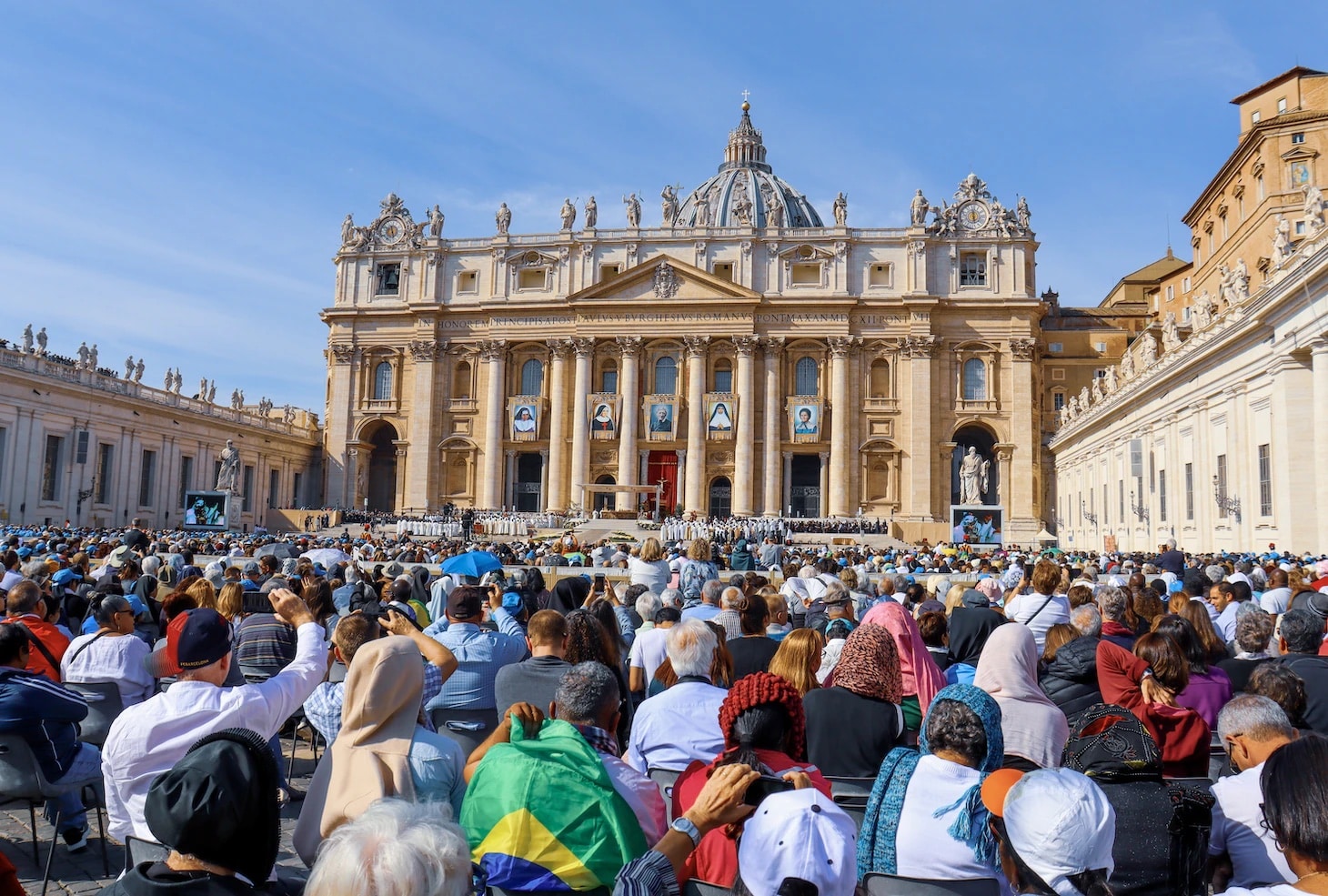Revelation 17:3: And he carried me away in the Spirit into the wilderness, and I saw a woman sitting on a scarlet beast that was full of blasphemous names, and it had seven heads and ten horns.
To John Gill, nearly everything wicked goes back to the popes. The pope controls the church in Rome. The church, in turn, exercises great influence over the city of Rome. Rome, in John’s day, held jurisdiction over (most of) the kings of the earth. It all traces back to the papal power.
To John Gill, nearly everything wicked goes back to the popes.
Revelation 17 depicts (1) a great prostitute seated over the nations and (2) a woman riding a beast. Both appear to be working in concert and, in Gill’s view, at the pope’s direction. Chapter 17 draws out some of the themes first introduced in Chapters 12 and 13, which I will spell out below. But first, who is the great prostitute? Who is the woman? And, who is the beast?
The Great Prostitute
Gill states the great prostitute is “no other than Rome Papal;”1See Gill’s comments on Rev. 17:1. meaning, the pope’s ecclesiastical influence. That whole system adorned itself in gaudy apparel, which corresponds to the “external lustre and splendor of the worship of the church of Rome.”2See Gill’s comments on Rev. 17:1. Yet, the inside was full of dead men’s bones, spiritually. Worse, she martyred those who rejected her prostitutions and remained faithful to God. Remember, Gill’s generation was only a few years removed from the Roman church’s sanction and execution of untold thousands of murders: in his words, “blood-thirstiness . . . butcheries . . . and burning[s].”3See Gill’s comments on Rev. 17:6.
Gill states the great prostitute is “no other than Rome Papal.”
Revelation 17:1
The Woman & the Beast
Gill believes the woman on the beast is the Roman Catholic Church. The beast, in this instance, specifically refers to the pope’s civil influence over the church. Due to the church/state union at the time, this influence extended into society as well. He states:
[T]he woman designs the Romish church, with the pope at the head of it, and the beast the Roman Papal empire as civil, by which the former is supported and held.”
John Gill, comments on Revelation 17:3
This picks up on the two beasts from Revelation 13:1, which is really one beast with two arms: (1) an ecclesiastical arm and (2) a civil arm. Revelation 17 speaks of the civil branch, as indicated by the seven heads and ten horns.
Gill believes the woman on the beast is the Roman Catholic Church.
Revelation 17:3
The 7 Heads, 7 Kings, and 10 Horns
These symbolic reference also are mentioned in Revelation 12:3. The seven heads represent the city of Rome, which was built upon seven mountains.4See Gill’s comments on Rev. 12:3; 17:9. Revelation 17:10 says this also signifies seven kings.
These “kings,” says Gill, preside over seven forms of government: “kings, consuls, dictators, decemvirs, tribunes, emperors, and popes.”5See Gill’s comments on Rev. 17:10. Of course, an eighth and final head emerges from the seventh. They are one and the same: the popes of Rome.6See Gill’s comments on Rev. 17:10. As such, the popes, who historically always have been lurking in the background, begin to take center stage in the final days.
The 10 horns represent the Roman empire once it was split into 10 kingdoms beginning around 455 AD.7See Gill’s comments on Rev. 8:12. Gill offers several options on the identity of these 10 kingdoms. There is no unanimity among scholars, and Gill leaves it to the reader to decide. Their influence still exists in some form today, and will continue to towards the end of the world, though their ideology has spread beyond national boundaries.8See Gill’s comments on Rev. 17:12.
The Beast Who Was, Is Not, but Will Be
Revelations 17:8 states the beast “was, is not, and about to rise . . .” This hearkens back to Revelation 13:2 when the beast was mortally wounded. Gill states the beast who “was,” loosely signifies the Roman empire when the emperor and pope were in lockstep.9See Gill’s comments on Rev. 17:8. The mortal wound occurred in 476 A.D. when the Roman emperor, Augustulus, quit and Rome’s power was weakened.10See Gill’s comments on Rev. 8:12. This prophecy envisions a day when the pope accumulates total power unto himself, and the emperor (and the kings under him) serves his pleasure in the final days. The beast will rise in full power in those days, with the Roman Catholic Church riding the civil state system and exercising dominance over the nations.
Reflections
As mentioned, we all are influenced by the times in which we live. For instance, the Eagles recorded a hit song in 1977 that went to number one, Hotel California. One of the writers, Don Henley, said the Hotel California in the song was emblematic of “American culture in general.”11Television documentary, History of the Eagles, 2013, quote occurs at 1:30:50–1:31:10. That is, America’s lust-filled world system: driven by sex, greed, materialism, and self-idolatry.
The Hotel seems so beautiful in its outward appearance, but it’s all a façade. Once in it, each person becomes enslaved by their own desires. One verse of that song says:
Mirrors on the ceiling, the pink champagne on ice.
Hotel California, The Eagles
And she said, “We are all just prisoners here of our own device.”
And in the master’s chambers they gathered for the feast.
They stab it with their steely knives but they just can’t kill the beast.
The closing verse goes like this:
Last thing I remember I was running for the door.
Hotel California, The Eagles
I had to find the passage back to the place I was before.
“Relax,” said the night man, “We are programmed to receive.
You can check out any time you like but you can never leave.”
Henley (and the other writers) were no theologians. However, some theologians today do feel like the beast is Satan’s world system, the Hotel California. Gill felt like it was the wicked Roman Catholic system, ecclesiastical and civil. I suppose some today will suggest social media is the “beast.” Again, we all are products of our own times. Who knows what “beast” might arise in the future, should the Lord tarry?
I don’t discount the idea that the pope could rise to accumulate total power, as Gill suggests, but I can’t limit it to that idea, either. My mind remains open because Revelation 17:9 tells me, “This calls for a mind of wisdom.”
References
| 1, 2 | See Gill’s comments on Rev. 17:1. |
|---|---|
| 3 | See Gill’s comments on Rev. 17:6. |
| 4 | See Gill’s comments on Rev. 12:3; 17:9. |
| 5, 6 | See Gill’s comments on Rev. 17:10. |
| 7, 10 | See Gill’s comments on Rev. 8:12. |
| 8 | See Gill’s comments on Rev. 17:12. |
| 9 | See Gill’s comments on Rev. 17:8. |
| 11 | Television documentary, History of the Eagles, 2013, quote occurs at 1:30:50–1:31:10. |




